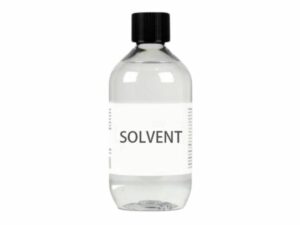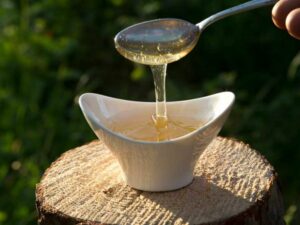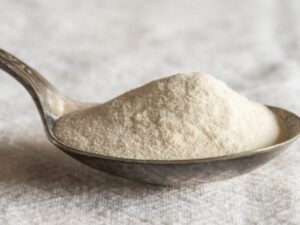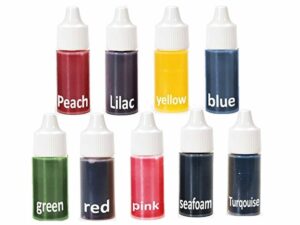Have you ever wondered what goes into your hand wash? The importance of understanding hand wash making raw materials cannot be overstated, especially in a world prioritizing cleanliness and hygiene.
With extensive research and consultation with experts, we’ve compiled a comprehensive list, ensuring accuracy and relevancy.
Here’s a sneak peek at two of the essential ingredients:
In this guide, we’ll delve deep into the world of hand wash components, shedding light on the role and significance of each ingredient.
Read on to unveil the secrets behind the liquid that keeps your hands germ-free.
1. Surfactants
Surfactants are essential components in hand wash formulations, enabling the effective removal of dirt and oil from the skin. These compounds reduce surface tension between two liquids or a liquid and a solid, making them vital for cleansing. Finding the right surfactant can transform a product’s cleansing efficacy and feel.
Anionic Surfactants
- Sodium Laureth Sulfate (SLES): A commonly used anionic surfactant known for its robust cleansing properties and abundant lather generation.
- Sodium Lauryl Sulfate (SLS): Another popular choice in formulations, valued for its excellent foaming abilities and deep-cleaning action.
- Alpha Olefin Sulfonates (AOS): According to STPP group, Alpha olefin sulfonate is a versatile surfactant known for its cleaning ability, foam boosting, and compatibility with other surfactants. This surfactant offers good detergency and is often chosen for its biodegradability and mildness on the skin.
Cationic Surfactants
- Behentrimonium Chloride: Primarily found in conditioners, this surfactant is appreciated for its superior conditioning and detangling properties.
- Cetrimonium Chloride: Known to improve texture and provide antistatic qualities, making it a favorite for products requiring a smoother feel post-wash.
- Stearalkonium Chloride: Frequently used in hair care products, this surfactant offers conditioning benefits and helps reduce static.
Non-ionic Surfactants
- Cocamidopropyl Betaine: This gentle surfactant enhances foam and helps thicken formulations while ensuring mild cleansing.
- Decyl Glucoside: Derived from renewable plant resources, it’s valued for its eco-friendliness and mildness, making it suitable for sensitive skin.
- Polysorbate 20: Often used as an emulsifier, it helps combine oil and water phases in a formulation, ensuring stability and consistency.
Amphoteric Surfactants
- Cocamidopropyl Hydroxysultaine: Known for its thickening, foaming, and conditioning properties, it’s often utilized in formulations aiming for gentleness.
- Lauryl Hydroxysultaine: This surfactant boasts impressive foam boosting abilities and is appreciated for its mild nature.
- Disodium Cocoamphodiacetate: Derived from coconut oil, it’s recognized for its softening effect on the skin and is often found in baby products due to its gentle cleansing attributes.
| Characteristic |
Description |
| Type |
Amphoteric Surfactants |
| Function |
Act as both anions and cations based on pH; provides foaming and cleansing action. |
| Key Benefits |
– Mildness (suitable for sensitive skin) |
|
– Good foaming in the presence of oils/dirt |
|
– Antimicrobial properties |
| Compatibility |
Works well with other surfactants, enhancing formulation flexibility. |
| Ideal Use |
Hand washes aimed at gentle cleansing, especially for sensitive or baby skin. |
2. Solvents
Solvents in hand wash play a crucial role in dissolving other ingredients and ensuring that they are evenly distributed throughout the product. They help in achieving the desired consistency and enhance the product’s overall application and feel. Choosing the perfect solvent can be the secret to unlocking a formula’s full potential.

Water
- Distilled Water: Often utilized due to its purity, distilled water ensures that no external contaminants affect the product’s quality. For example, in aloe vera hand wash, distilled water could be used to maintain the ingredient’s integrity and benefits.
- Soft Water: Soft water is preferred in some formulations as it does not contain minerals that could interfere with the effectiveness of other ingredients, ensuring a consistent and high-quality product.
- Deionized Water: This form of water has had its ions removed, making it a high-purity solvent that enhances the stability and shelf-life of the product.
Alcohol
- Ethanol: Commonly used as a solvent and also offers antibacterial properties. In a lavender hand wash, for example, ethanol could be used to dissolve essential oils and act as a preservative.
- Isopropanol: Frequently utilized due to its effectiveness in breaking down oils and other non-water-soluble substances, ensuring a thorough cleansing action.
- Benzyl Alcohol: Acts as a solvent and preservative, known for its ability to enhance a product’s shelf life by preventing microbial growth.
3. Thickening Agents
Thickening agents are instrumental in providing hand washes with the desired consistency, ensuring that they aren’t too runny or too thick. They ensure that the product flows smoothly and maintains its structure, preventing ingredients from separating. A finely chosen thickening agent breathes life into a formulation, transforming it from a mere liquid to a luxurious experience.

Xanthan Gum
- Stability Enhancer: Xanthan gum is celebrated for its ability to stabilize emulsions, ensuring that the hand wash retains its consistency over time.
- Shear-thinning Property: This property allows the hand wash to be easily pumped or squeezed out but regain its thickness once applied, offering a smooth application experience.
- Rheology Modifier: It has the unique ability to modify the flow behavior of fluids, often imparting a silky feel to the product upon application.

Guar Gum
- Skin-Softening Properties: Beyond its thickening capabilities, guar gum imparts a soft, smooth feel to the skin post-wash.
- Hydrocolloid Nature: This characteristic enables guar gum to retain water and swell, imparting a rich and creamy texture to the hand wash.
- Fast Hydration: It offers rapid hydration when added to water, allowing for quick and easy formulation processes.

Cellulose
- Gel Formation: It helps in creating clear gels, which can add a luxurious touch to the hand wash appearance.
- Film-forming Abilities: Cellulose can form a protective layer on the skin, enhancing the after-feel and ensuring prolonged moisturization.
- Non-ionic Nature: This means it’s compatible with most surfactants and ingredients, ensuring formulation harmony and stability.
4. Preservatives
Preservatives are integral to ensuring the longevity and safety of hand wash formulations. By preventing microbial growth, they ensure that products remain effective and safe for use over their intended shelf life. Nako Cosmetic understands the importance of these agents and strives to shed light on their various types and uses.
Parabens
- Wide Spectrum: Parabens are recognized for their broad-spectrum activity against a variety of microbes, contributing to the overall preservation of the product.
- Cost-effectiveness: Being cost-effective makes parabens a common choice in the formulation of various personal care products, ensuring affordability without compromising quality.
- Ease of Incorporation: Parabens can be easily integrated into various formulations, making them a flexible option for different types of hand washes.
Phenoxyethanol
- Efficacy: Known for its effectiveness against a wide array of bacteria and yeasts, phenoxyethanol ensures that the hand wash remains fresh and uncontaminated.
- Consumer Perception: Given the shifting consumer preferences towards paraben-free options, phenoxyethanol stands out as a favorable alternative. Its acceptance in various markets underscores its relevance in contemporary formulations.
- Compatability: Phenoxyethanol is compatible with many other preservatives and ingredients, making it a prevalent choice in diverse formulations.
Sodium Benzoate
- pH Sensitivity: Sodium benzoate is most effective in acidic formulations, where it can effectively inhibit the growth of fungi and bacteria.
- Safety Profile: With a well-established safety profile, sodium benzoate is a trustworthy addition to hand wash formulations, ensuring product safety.
- Environmental Impact: As a preservative, sodium benzoate is also noted for its low environmental impact, aligning with sustainable and eco-friendly product considerations.

5. Special Ingredients
Special ingredients elevate a hand wash, transforming it from a mere cleansing agent to an experience for the senses. These unique components can offer therapeutic, aromatic, or sensory benefits, enhancing the overall product appeal. Nako Cosmetic understands the importance of incorporating special ingredients to cater to discerning and varied consumer preferences.
Fragrances
Fragrances breathe life into a hand wash, evoking emotions and memories with every use. These olfactory delights serve dual purposes – masking the scent of other ingredients and providing a pleasurable hand washing experience.

Synthetic Fragrances
- Consistency: Synthetic fragrances ensure consistency in scent, delivering a uniform aromatic experience across batches.
- Longevity: Often, these fragrances are formulated to have a lasting scent, ensuring that the pleasant aroma lingers post-wash.
- Allergenic Concerns: While they offer a vast array of scent options, there’s a discernible move towards being cautious due to potential allergenic concerns. Balancing scent and sensitivity remains a craft in formulation.
Essential Oils
- Natural Origin: Essential oils, derived from plants, offer a natural way to infuse hand washes with captivating scents.
- Therapeutic Benefits: Beyond their aromatic appeal, many essential oils, such as lavender or tea tree, bring along therapeutic properties, contributing to the overall efficacy of the hand wash.
- Variability: Due to their natural origin, essential oils might present slight variations in scent between batches, capturing the essence of nature in its true form.
Colorants
Colorants add visual appeal to hand wash formulations, making them more enticing to the consumer. While their primary function is aesthetic, they also play a role in product branding and differentiation in the market.

Natural Colorants
- Turmeric: Derived from the turmeric plant, this colorant offers a rich yellow hue and is often favored for its additional anti-inflammatory properties.
- Beetroot Extract: Providing a deep red to pink shade, beetroot extract is not only a natural colorant but also brings along antioxidants that can benefit the skin.
- Chlorophyll: Extracted from green plants, chlorophyll imparts a soothing green shade, often associated with herbal or detoxifying products.
Synthetic Colorants
- FD&C Colors: These are FDA-approved color additives, ensuring safety and consistency in the shade across different batches.
- D&C Colors: Suitable for drug and cosmetic applications. They offer a wide palette of colors, enabling formulators to achieve the desired shade with precision.
- Lakes: These are water-insoluble dyes, perfect for products with a high oil content, ensuring the color remains vibrant and doesn’t bleed.
Dive Deeper Into Our Resources
Looking for more diverse product options? Browse through our handpicked selections:
Still haven’t found what you’re looking for? Don’t hesitate to contact us. We’re available around the clock to assist you.
Conclusion
The art of hand wash formulation is both intricate and fascinating, but understanding the key raw materials simplifies the journey. This guide provides clarity on the primary ingredients that shape a product’s effectiveness, feel, and appeal.
For those aiming to dive deeper into the world of cosmetic formulation, Nako Cosmetic stands as a beacon of knowledge and expertise. To explore further, don’t hesitate to contact us.






